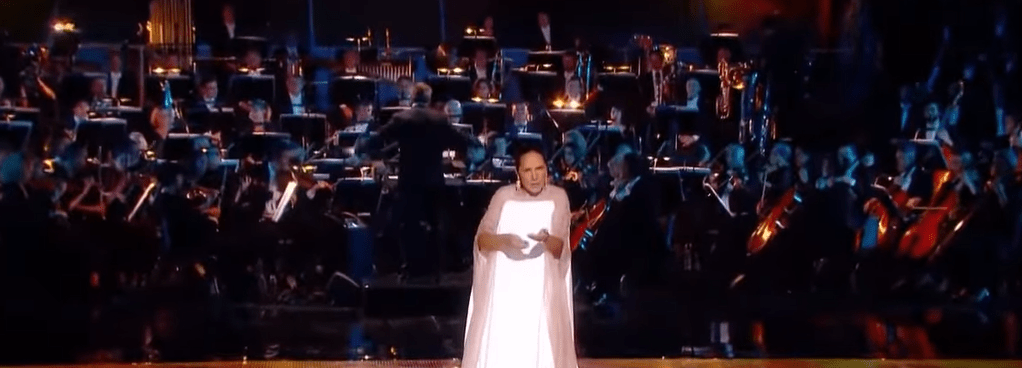Her voice carved memory into silence rather than just resonating through opera houses. The stage was constantly transformed into a theater of fire, defiance, and heartbreak by Béatrice Uria-Monzon, who did not so much portray Carmen as inhabit her. Even seasoned critics were taken aback by her emotional precision in her singing. Her early years were infused with the soul of melody, the stillness of painting, and the rhythm of flamenco—a powerful combination that subsequently influenced her dramatic interpretations. She was born in Agen to a French mother and a Spanish father.
Her first forays into opera were not hasty. After completing advanced lyrical training at Paris’s esteemed opera school, she refined her stage instincts in Marseille after starting conservatory training in Bordeaux. She made her professional opera debut in 1989 in the role of Cherubino. However, 1993 was the turning point; although her portrayal of Carmen at the Opéra Bastille immediately brought comparisons to the most famous actors in the role, critics noted that she added something unique: inner resolve.
She returned to Carmen remarkably frequently over the last thirty years, sometimes going back to the role more than once in a single year. No performance, however, ever seemed to be repeated. She performed each aria as though it had been composed right then and there, redefining Carmen as a woman who fiercely asserts her independence rather than merely a sensual spirit. Audiences who preferred substance to stereotype benefited most from this interpretive development.
Biographical Table
| Full Name | Béatrice Uria-Monzon |
|---|---|
| Born | December 28, 1963 – Agen, France |
| Died | July 19, 2025 – Agen, France |
| Nationality | French (Spanish heritage) |
| Profession | Opera Singer (Mezzo-soprano, later soprano) |
| Signature Role | Carmen (Bizet) |
| Notable Awards | Légion d’honneur, Ordre national du Mérite, Ordre des Arts et des Lettres |
| Active Years | 1987–2025 |
| Spouse | Private equity professional (name withheld) |
| Children | One daughter – Cassiana Sarrazin |
| Official Site | www.beatrice-uriamonzon.com |

She never let Carmen define her, even though it became her defining role. She was able to perform a variety of roles that tested her vocal range and psychological nuance thanks to her remarkable voice adaptation. She demonstrated her extraordinary versatility in works ranging from Massenet’s Charlotte to Berlioz’s Béatrice. She made the daring and remarkably successful decision to go into soprano territory in her later career. She demonstrated vocal maturity and a revitalized stage presence in Tosca and Gioconda.
She developed characters with remarkably distinct emotional arcs by drawing on her years of stagecraft experience. Her measured yet urgent delivery as Judith in Bluebeard’s Castle filled the theater with vulnerability without sacrificing strength. She added elegance to even the most unusual phrasing in contemporary compositions like Francesconi’s Trompe-la-mort, and she was just as convincing in these works.
She deliberately kept her private life quiet. She stayed grounded and married a private equity executive, choosing low-key family gatherings over extravagant events. In a subtle nod to the family’s creative heritage, her daughter Cassiana works behind the camera in the film industry. Uria-Monzon provided scholarships for aspiring singers in southwest France and supported regional music education initiatives through strategic philanthropy.
She continued to perform on stage throughout the last years of her life, despite the fact that illness was slowly taking away her time. One Parisian critic called her last Carmen, which she performed just two years before she passed away, “exceptionally durable—a portrayal stitched with both ferocity and farewell.” Her voice remained remarkably powerful despite her waning strength, displaying a fortitude that few could match.
Opera houses have paid homage, from Vienna to La Scala. At the Opéra Bastille, a marble plaque now sits backstage. Additionally, the Grand Officier of the Légion d’honneur has been posthumously awarded by the French government. Her story is especially motivating for aspiring artists because it serves as a reminder that artistic integrity, perseverance, and reinvention are not only possible but also have a significant influence.
In contrast to many public personalities who seek out new information, Uria-Monzon favored expanding on her existing knowledge. Her recordings and the emotional reverberations she left behind are both important parts of her legacy. Not only did the mezzo sing “L’amour est un oiseau rebelle,” but she also lived it with grace and dignity.
Her body of work will surely be studied by opera schools in the years to come as a masterwork of perseverance and compassion. And the memory of Béatrice Uria-Monzon whispering from the wings—urging truth, not mimicry; power, not volume—will accompany new performers who dare to take Carmen’s place.
The music—recorded, etched in memories, and echoed in shaky applause—will keep rising even after her curtain has fallen.

